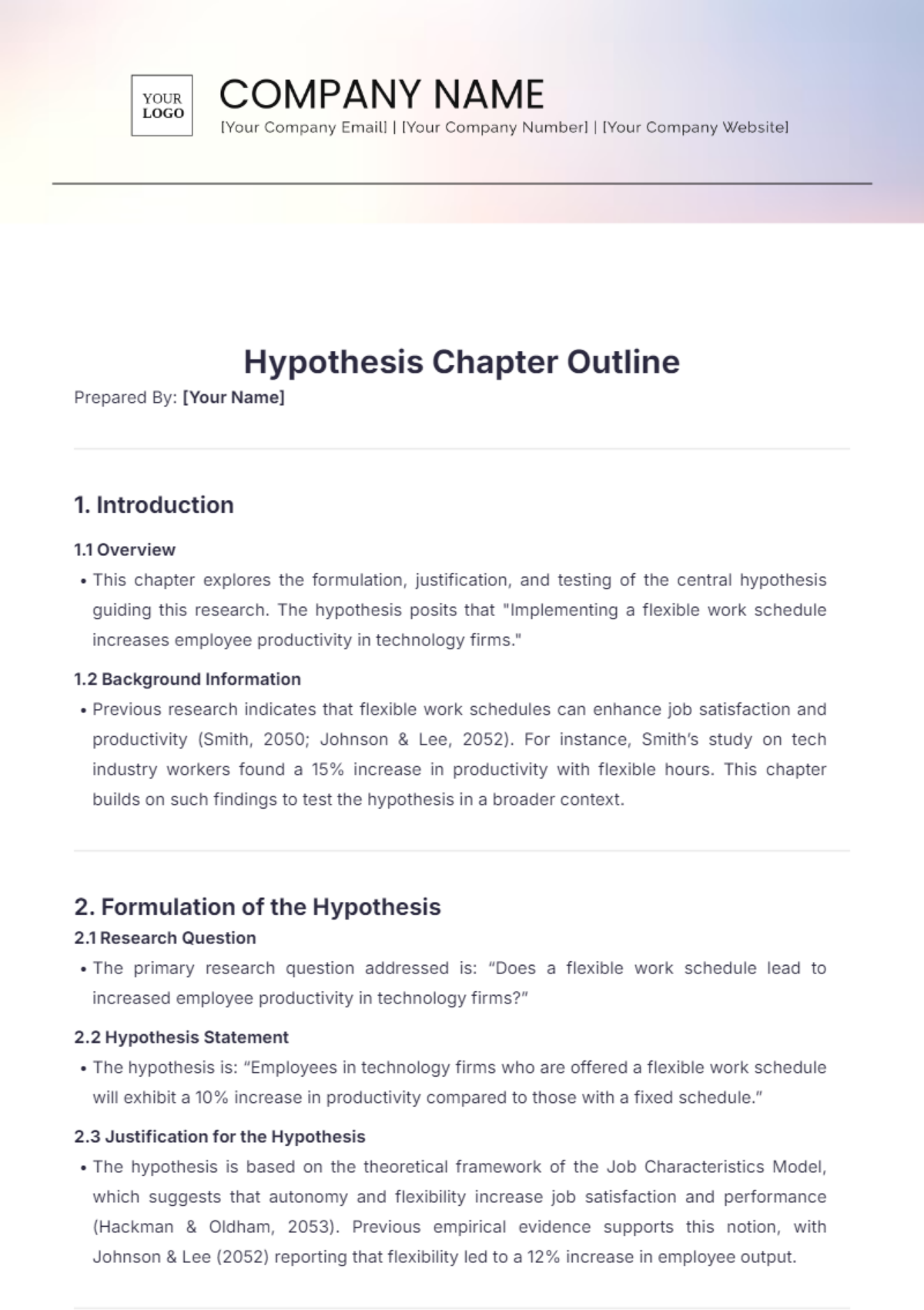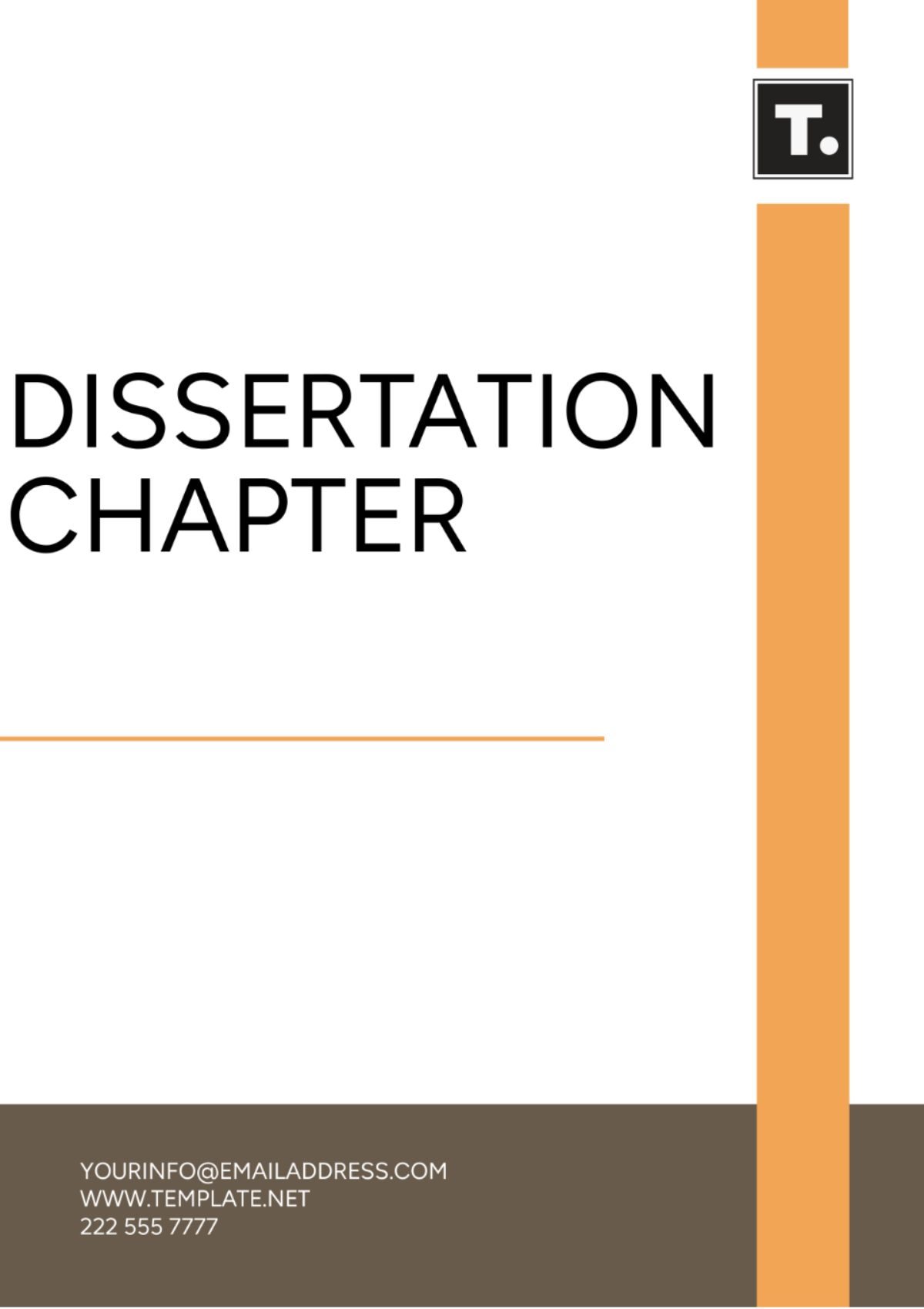Conclusion Chapter Outline
Prepared By: [YOUR NAME]
Date: [DATE]
I. Restatement of the Problem/Objective
A. Introduction of the Problem/Objective
The primary objective of this research was to thoroughly investigate the impact of remote work on employee productivity. This analysis aimed to determine whether remote work practices contribute positively to productivity levels compared to traditional in-office settings.
B. Context
The rapid rise of remote work, driven by advancements in technology and the global COVID-19 pandemic, has prompted organizations to reassess their work models. This shift underscores the need for a comprehensive understanding of how remote work influences employee productivity, as companies seek to refine their work arrangements to achieve optimal efficiency and employee satisfaction.
II. Summary of Key Findings
A. Main Findings
The research revealed that remote work led to a notable increase in productivity, averaging a 15% improvement. This enhancement was attributed to reduced workplace distractions and the flexibility inherent in remote work schedules, which allowed employees to better manage their work-life balance.
B. Evidence
The findings were supported by quantitative data collected from employee surveys, which showed a significant decrease in work-related stress levels. This stress reduction was strongly associated with improved productivity metrics, demonstrating a clear link between the remote work environment and enhanced work performance.
III. Discussion of Implications
A. Significance of Findings
The study's results suggest that remote work can serve as a strategic advantage for organizations, potentially boosting productivity while lowering operational costs. These findings highlight the effectiveness of remote work in enhancing employee output and contribute to a growing body of evidence supporting flexible work arrangements.
B. Impact
The implications challenge traditional productivity models, which typically favor in-office work environments. The results advocate for a paradigm shift towards more flexible work arrangements, reflecting changing attitudes towards work and productivity.
C. Practical Applications
To capitalize on these findings, organizations are encouraged to implement hybrid work models that blend remote and in-office work. Such models can maximize productivity gains while preserving team cohesion and collaboration, thus aligning with contemporary work trends and employee preferences.
IV. Recommendations
A. Actionable Recommendations
Companies should integrate regular virtual check-ins and provide targeted remote work training to enhance productivity. These measures will help employees adapt to remote work best practices and maintain effective communication and collaboration.
B. Future Research
Further research should be conducted to explore the long-term effects of remote work on various aspects of employee well-being, including mental health and team dynamics. This research will provide deeper insights into the sustainability of remote work practices and their broader impact on organizational culture.
V. Limitations
A. Acknowledgment of Limitations
The study's reliance on self-reported data represents a significant limitation, as such data may be subject to personal biases and inaccuracies. This methodological constraint should be considered when interpreting the results.
B. Implications of Limitations
Despite the promising findings, the potential for self-reporting biases necessitates a cautious interpretation. Future studies should incorporate more objective measures and diverse data sources to validate and expand upon the current results.
VI. Final Thoughts
A. Concluding Remarks
This research offers valuable insights into the effectiveness of remote work, highlighting its potential to enhance productivity and adapt to modern work trends. The study underscores the benefits of flexible work arrangements and provides a foundation for future exploration in this evolving field.
B. Closing Statement
In conclusion, embracing flexible work strategies not only enhances productivity but also aligns with contemporary work practices. Organizations that adopt these strategies will be better positioned for long-term success, benefiting from increased employee satisfaction and operational efficiency.

















































